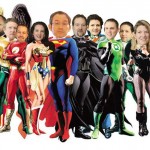 An HR brand is a reflection of a company's culture, what it's like to work there, how everybody gets along and how the job's getting done. You might think you don't have an HR brand, but you do. Why? Because people talk, and in this case, it's your employees. Rather than allowing an HR brand to evolve on its own, take control to ensure you have a strong brand that's in tune with your business.
An HR brand is a reflection of a company's culture, what it's like to work there, how everybody gets along and how the job's getting done. You might think you don't have an HR brand, but you do. Why? Because people talk, and in this case, it's your employees. Rather than allowing an HR brand to evolve on its own, take control to ensure you have a strong brand that's in tune with your business.
The first step is to make sure your company brand is well defined, well-articulated and well represented. From this, an HR brand can be born. Consider these examples right here in Houston.
ExxonMobil
Kelsey-Seybold Clinic
An effective HR brand helps you retain employees and attract new ones.
Talk to your employees to understand what it is about working at the company that appeals to them. Take note of long-term employees' personality traits and characteristics, chat with retirees, perhaps even seek out those who quit and ask them why they left. You could ask employees if they feel they are treated as well as the company treats its customers. Sometimes the truth hurts, but getting to the bottom of it gives you the raw data you need to build a top-notch brand.
Nothing kills an HR branding effort faster than a chasm between what you want your brand to say and the reality of your employees' experiences. If this is happening, it might be time to make changes to company practices and procedures.
For example, if a company proclaims "our employees are our most important asset," yet in practice churns through employees at an alarming rate, there is a clear disconnect between reality and message.
Address any issues internally first so employees begin to believe what the company is telling them. As ambassadors of the HR brand, they in turn effectively communicate the correct message.
Branding is best when it's easily and concisely explained. Once you understand what your corporate culture is, put adjectives to it and then leverage those adjectives in a way that articulates why your company is a great place to work.
The Houston Business Journal recently released its annual list of "Best Places to Work" in 2012. This year, HBJ asked top executives to describe their corporate culture. They did, and the results prove that just a few words can make a big impression. Examples:
Try this: Google images of what it's like to "work at Google," and Google search results will show pictures of employees riding a slide down to the cafeteria, playing ping pong and cruising around on skateboards or scooters. This is a well-publicized HR brand that demonstrates Google's belief that employees are most productive and creative if they can cut loose a little.
 A local example would be the image submitted to Houston Business Journal by Server Side Design. It's a photo of employees' heads transplanted onto the cartoon bodies of superheroes. Its corporate culture tag? Fun, community-oriented. Server Side Design earned fourth place on HBJ's Best Places to Work list.
A local example would be the image submitted to Houston Business Journal by Server Side Design. It's a photo of employees' heads transplanted onto the cartoon bodies of superheroes. Its corporate culture tag? Fun, community-oriented. Server Side Design earned fourth place on HBJ's Best Places to Work list.
Now that you've created a strong HR brand, use it at every opportunity. Company gatherings, meetings, workshops, hiring fairs, recruiting events… anywhere current and/or future employees linger.
Overall, HR branding is not a new concept, nor is it experiencing a revival. It's just something people need to be constantly reminded of because of the ever-expanding world of social media. Twitter, LinkedIn and Facebook amplify voices, whether it's that of an employee, customer, candidate, prospect or stakeholder. It's in your company's best interest to ensure that voice maximizes strengths and minimizes shortcomings.
[Spotlight photo by David Joyce]